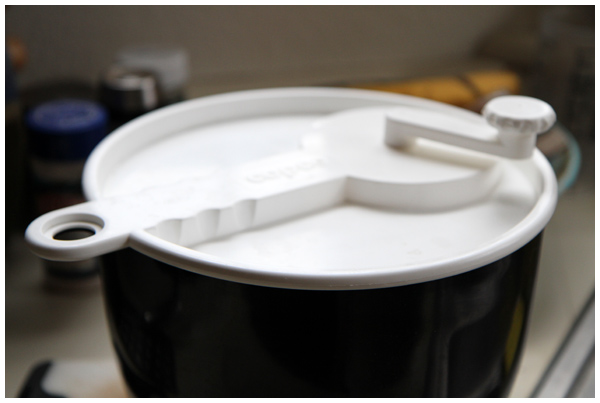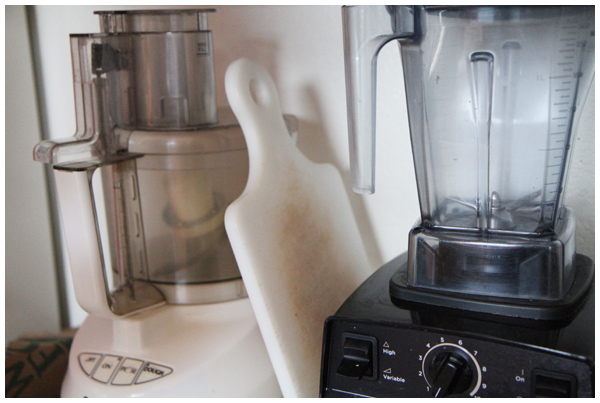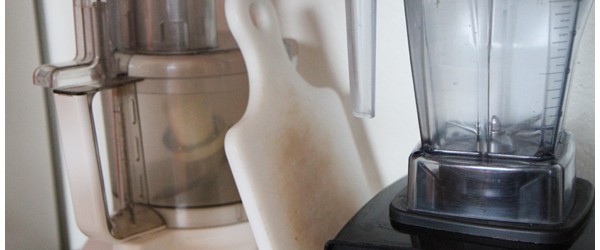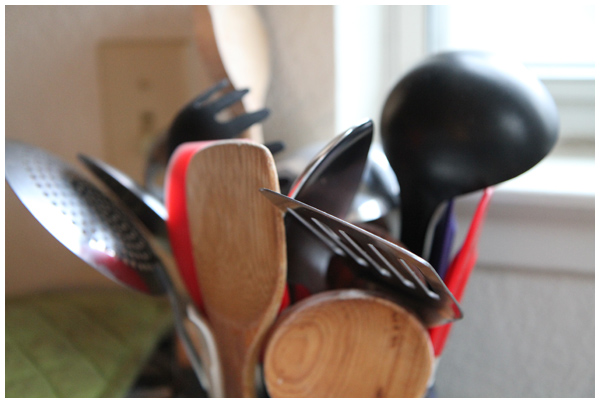We’ve tossed the BPA-laced canning lids and only buy BPA-free canned goods, yet we still have BPA lurking throughout the kitchen. Here’s my plan of attack.
Replace our old salad spinner with a metal or BPA-free-plastic salad spinner
:

Toss out our old plastic cutting boards in favor of bamboo ones and say goodbye to our Cuisinart food processor:

Many countertop appliances like food processors or blenders contain BPA in the food bowls. (Yet another reason to switch to the BPA-free Vitamix blenders — we LOVE ours!)
I just contacted KitchenAid and evidently the bowls for their brand new 7, 9, and 13 cup food processors are now BPA free! (The 7 cup is model KFP0711, the 9 cup is model KFP0922, and the 13 cup model is KFP1333.) Since Cuisinart has yet to jump on the BPA-free band wagon for their full-sized food processors, it looks like I’m going to be asking for a BPA-free KitchenAid food processor for the Christmas this year!
Updated November 2012:
Great news! There are now MANY more food processors that contain BPA-free bowls: Breville BFP800XL Sous Chef Food Processor, Cuisinart DLC-2011CHB Prep 11-Cup Food Processor
and Cuisinart FP-12DC Elite Collection 12-Cup Food Processor
, among others (see Cuisinart’s site for more information about each of their models).
Donate our plastic cooking tools (like spatulas and ladles) and keep our bamboo, wood, silicone, and stainless steel ones:
But it’s not quite so simple.
There are so many other places BPA may be lurking:
– plastic strainers
– plastic mixing bowls
– plastic measuring spoons and cups
– plastic tupperware (instead we use sets of these Pyrex glass and BPA-free lids and Snapware Glasslock Glass Storage Containers
!)
– plastic water pitchers (Brita pitcher are BPA-free)
– any type of canned product that doesn’t specifically say BPA-free; including soda pop cans, not just that can of soup! (I recently stopped buying cans of coconut water and now buy terta pak containers instead.)
While I believe that making the above changes are important for our health, it’s difficult to justify the expense of replacing kitchen items that remain functional! I need to remind myself that while it may seem like an extraneous expense, we feel it’s an important one. I guess we had better budget for those new kitchen items. Check back in to see how we do.


Thank you for the no BPA links for commonly used items!! So appreciate your finding out and then posting safe products. I’m surprised Manufacturers don’t list non BPA as part of their features… How do you find out if they are BPA-free?
I think most companies shy away from advertising their BPA-free products because it highlights the fact that many of their products do contain BPA.
The only ways to know if something does or doesn’t contain BPA is to 1) see if it says BPA-free on the packaging or product website (OXO does a great job of advertising its BPA-free products) or 2) contact the company and ask. I’ve found they are very punctual about writing back if the product is BPA-free and less likely to write back when the products do contain BPA.
cuisinart now has almost all of their food processors, bpa free..
Thanks for the info, Deb! It’s amazing how fast news changes; four months ago they didn’t offer any BPA-free products except for their mini-chop and coffeemakers. Glad to see they have jumped on the bandwagon… I’m hoping I can buy a replacement bowl instead of having to buy a whole new processor.